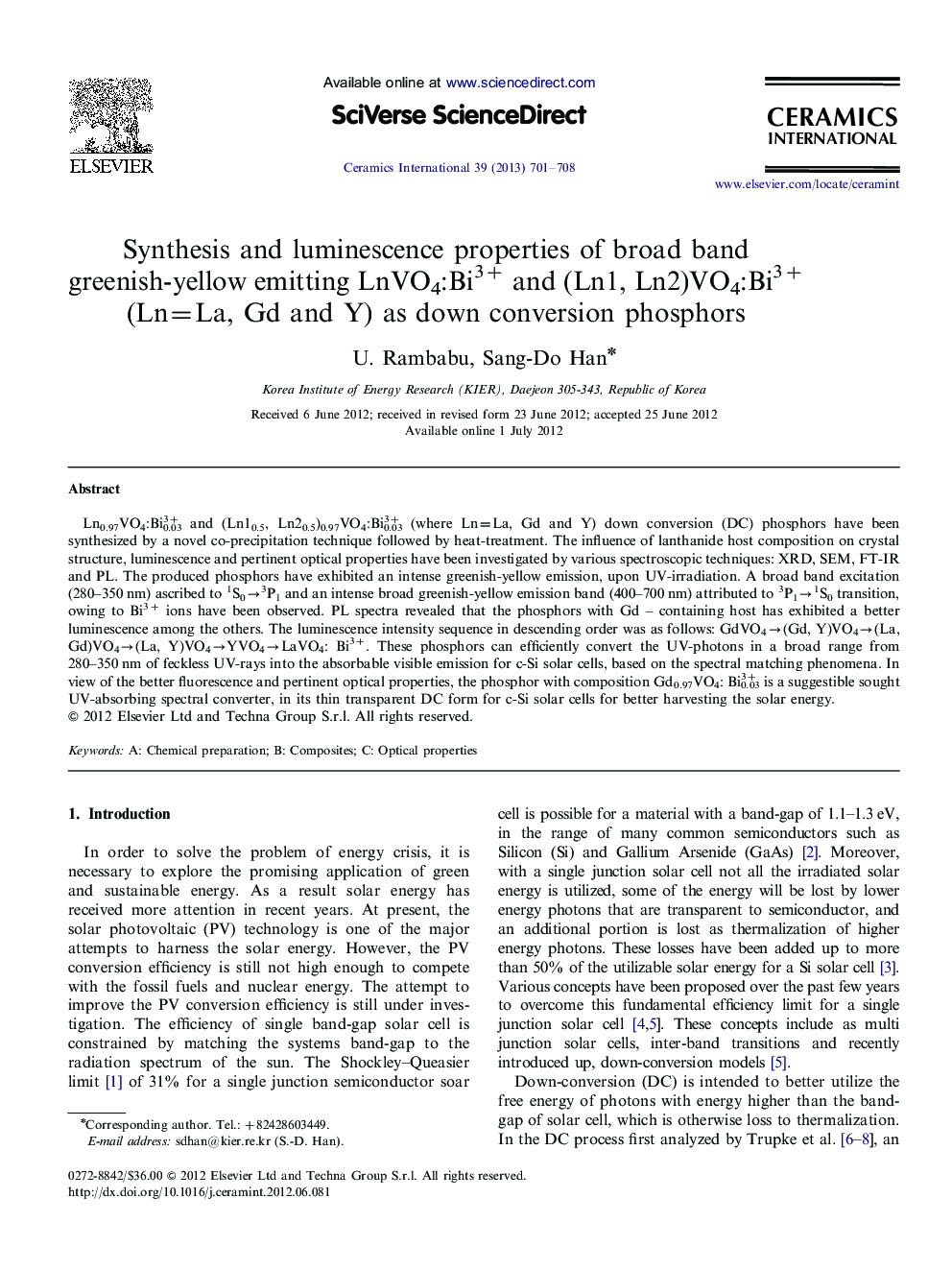| Article ID | Journal | Published Year | Pages | File Type |
|---|---|---|---|---|
| 1463514 | Ceramics International | 2013 | 8 Pages |
Ln0.97VO4:Bi0.033+ and (Ln10.5, Ln20.5)0.97VO4:Bi0.033+ (where Ln=La, Gd and Y) down conversion (DC) phosphors have been synthesized by a novel co-precipitation technique followed by heat-treatment. The influence of lanthanide host composition on crystal structure, luminescence and pertinent optical properties have been investigated by various spectroscopic techniques: XRD, SEM, FT-IR and PL. The produced phosphors have exhibited an intense greenish-yellow emission, upon UV-irradiation. A broad band excitation (280–350 nm) ascribed to 1S0→3P1 and an intense broad greenish-yellow emission band (400–700 nm) attributed to 3P1→1S0 transition, owing to Bi3+ ions have been observed. PL spectra revealed that the phosphors with Gd – containing host has exhibited a better luminescence among the others. The luminescence intensity sequence in descending order was as follows: GdVO4→(Gd, Y)VO4→(La, Gd)VO4→(La, Y)VO4→YVO4→LaVO4: Bi3+. These phosphors can efficiently convert the UV-photons in a broad range from 280–350 nm of feckless UV-rays into the absorbable visible emission for c-Si solar cells, based on the spectral matching phenomena. In view of the better fluorescence and pertinent optical properties, the phosphor with composition Gd0.97VO4: Bi0.033+ is a suggestible sought UV-absorbing spectral converter, in its thin transparent DC form for c-Si solar cells for better harvesting the solar energy.
